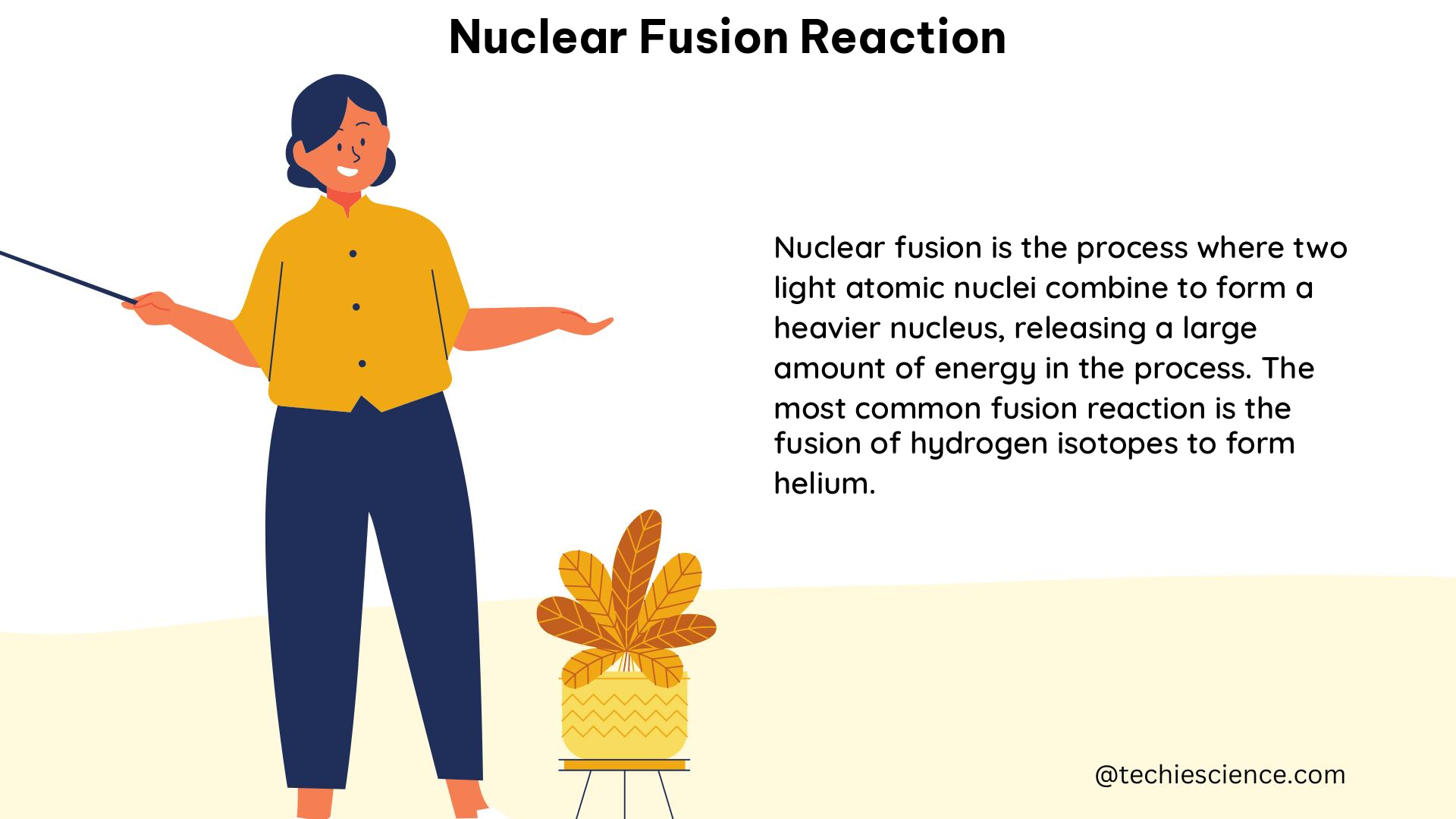Nuclear fusion is a process where light atomic nuclei, such as hydrogen isotopes, combine to form heavier nuclei, releasing a massive amount of energy in the process. This phenomenon holds immense potential as a clean and sustainable energy source, and researchers worldwide are actively working to harness its power. In this comprehensive guide, we will delve into the intricate details of nuclear fusion reactions, exploring the key concepts, the progress made in the field, and the enabling technologies that are driving advancements.
Understanding the Fundamentals of Nuclear Fusion
At the core of nuclear fusion is the principle of overcoming the electrostatic repulsion between positively charged nuclei, allowing them to fuse and form a heavier nucleus. This process is governed by the strong nuclear force, which acts at extremely short distances and can overcome the Coulomb barrier, the energy required to bring the nuclei close enough for fusion to occur.
The most common fusion reaction is the deuterium-tritium (D-T) reaction, where deuterium (2H) and tritium (3H) nuclei combine to form helium-4 (4He) and a high-energy neutron (n):
2H + 3H → 4He + n + 17.6 MeV
This reaction releases an impressive 17.6 MeV of energy, making it a prime candidate for fusion power generation.
Measuring Progress in Fusion Energy Research

The progress in fusion energy research is often evaluated using the “triple product,” which is the product of plasma density (n), temperature (T), and energy confinement time (τ). This quantity is a crucial metric as it represents the conditions necessary for a fusion power plant to achieve net energy gain.
The triple product can be expressed as:
Triple Product = n × T × τ
A fusion power plant running on D-T fuel is expected to have a triple product of about 5 × 10^21 m^-3 keV s or greater to achieve net energy gain.
Historical Advancements in Fusion Energy
The quest for fusion energy has been a long and arduous journey, marked by significant milestones and advancements over the decades. Let’s take a closer look at the progress made:
1950s: Early Fusion Experiments
The early fusion energy experiments in the 1950s achieved a triple product of about 10^14 m^-3 keV s, laying the foundation for future developments.
Late 1960s: The Soviet T-3 Tokamak
In the late 1960s, the Soviet T-3 tokamak achieved a plasma temperature of 1 keV, a significant step forward in fusion research.
20th Century: Tokamak Advancements
Throughout the rest of the 20th century, tokamaks, a type of magnetic confinement fusion device, demonstrated increasing triple product performance, paving the way for the development of larger and more advanced fusion reactors.
2030s: ITER’s Expected Performance
The International Thermonuclear Experimental Reactor (ITER), a multinational collaboration, is expected to achieve a triple product of about 10^25 m^-3 keV s in the mid to late 2030s, a significant milestone in the pursuit of fusion energy.
Recent Alternate Concepts
Recent results from alternate fusion concepts, such as inertial confinement fusion (ICF) and magneto-inertial fusion (MIF), have demonstrated plasma temperatures in the neighborhood of 1 keV, showcasing the potential of these approaches.
Enabling Technologies for Fusion Energy
Advancements in fusion energy research are not solely dependent on the progress in fusion reactions themselves but also on the development of enabling technologies. These technologies span various domains, including computation, materials, and manufacturing.
Computation
Supercomputing for simulation and artificial intelligence for design, experimental optimization, and active feedback are crucial computational tools that are driving progress in fusion energy research.
Materials
High-temperature superconductors, advanced semiconductor switches, advanced alloys, and ceramics are examples of materials that are enabling the development of more efficient and reliable fusion energy systems.
Manufacturing
Innovations in manufacturing, such as metal 3D printing, computer-aided design (CAD), and computer-aided manufacturing (CAM), are facilitating the fabrication of complex fusion reactor components and accelerating the pace of fusion energy development.
Conclusion
Nuclear fusion reactions hold immense promise as a clean and sustainable energy source, and the progress in this field has been remarkable. From the early fusion experiments in the 1950s to the expected performance of ITER in the 2030s, the fusion energy community has made significant strides in advancing the science and technology behind this transformative energy solution. As the enabling technologies continue to evolve, the path towards realizing the full potential of fusion energy becomes increasingly promising, paving the way for a future powered by this abundant and environmentally friendly energy source.
References

The lambdageeks.com Core SME Team is a group of experienced subject matter experts from diverse scientific and technical fields including Physics, Chemistry, Technology,Electronics & Electrical Engineering, Automotive, Mechanical Engineering. Our team collaborates to create high-quality, well-researched articles on a wide range of science and technology topics for the lambdageeks.com website.
All Our Senior SME are having more than 7 Years of experience in the respective fields . They are either Working Industry Professionals or assocaited With different Universities. Refer Our Authors Page to get to know About our Core SMEs.